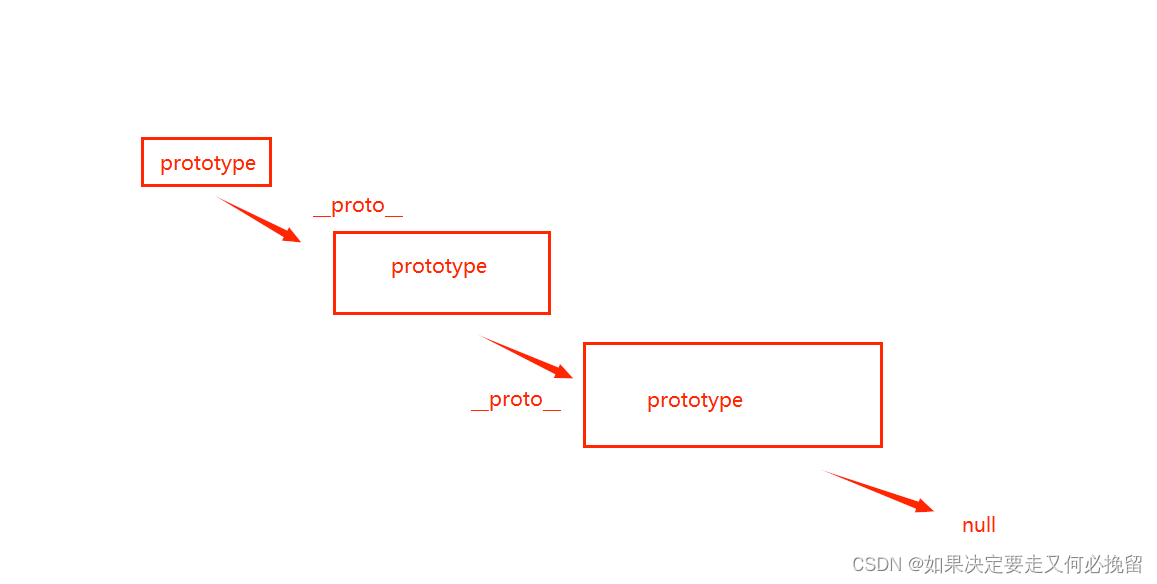原型链补充
发布时间:2023年12月31日
1.什么是原型对象
函数的独有属性,他用prototype来表示,可以在函数的prototype上挂载一些公用的属性和方法,供实例化对象来访问。
2.__proto__属性
这个属性每一个对象都有,实例化对象就是通过这个属性,来访问原型对象上的属性和方法的。
3.三者之间的关系

1.在构造函数的原型上挂载属性和方法
2.实例化对象上有__proto__可以直接访问,构造函数原型上的属性和方法。
3.代码:
function Person(naem, age) {
this.name = name;
this.age = age;
}
Person.prototype.eat=function(){
console.log('吃饭');
}
const a= new Person('小明',20)
a.eat() //直接访问原型上的属性和方法
4.例子1
实例化出来的对象能够直接访问,Array.prototype上的属性和方法。
const arr=new Array(1,2,3)
arr.reverse()
console.log(arr); console.log(arr.__proto__===Array.prototype) //返回的结果是True两层原型:一个是Array.prototype? 一个是Object.prototype。
Array.prototype也是一个对象,凡是对象就有__proto__属性,验证他的上一级原型对象是Object.prototype。
代码:
console.log(Array.prototype.__proto__===Object.prototype);5.例子2
class Teacher {
constructor(name, age) {
this.name = name;
this.age = age;
}
teach() {
console.log("教书");
}
}
class Student extends Teacher {
constructor(name, age) {
super(name, age);
}
learn() {
console.log("学习");
}
}
const student1 = new Student("小明", 20);
student1.teach()
console.log(student1);
验证:
console.log(student1.__proto__ === Student.prototype, 123456);
console.log(
Student.prototype.__proto__ === Teacher.prototype,
11111111111111111
);6.查找规则
1.首先在自己的原型中进行查找
2.没有就往上一级进行查找
3.找不到就返回null

文章来源:https://blog.csdn.net/qq_59076775/article/details/135320038
本文来自互联网用户投稿,该文观点仅代表作者本人,不代表本站立场。本站仅提供信息存储空间服务,不拥有所有权,不承担相关法律责任。 如若内容造成侵权/违法违规/事实不符,请联系我的编程经验分享网邮箱:chenni525@qq.com进行投诉反馈,一经查实,立即删除!
本文来自互联网用户投稿,该文观点仅代表作者本人,不代表本站立场。本站仅提供信息存储空间服务,不拥有所有权,不承担相关法律责任。 如若内容造成侵权/违法违规/事实不符,请联系我的编程经验分享网邮箱:chenni525@qq.com进行投诉反馈,一经查实,立即删除!
最新文章
- Python教程
- 深入理解 MySQL 中的 HAVING 关键字和聚合函数
- Qt之QChar编码(1)
- MyBatis入门基础篇
- 用Python脚本实现FFmpeg批量转换
- redis集群部署
- python基础小知识:引用和赋值的区别
- 使用Python管理MySQL数据库,有录播直播私教课视频教程
- php 调用python解密 AES-128-GCM
- 创建型模式之工厂方法模式
- jenkins+pytest+allure
- Redis遇到过的问题 (Could not get a resource from the pool )
- 什么是需求分析,如何进行需求分析?
- 京东宣布启动鸿蒙原生应用开发,全力支持鸿蒙生态 | 百能云芯
- 机器学习在表面缺陷检测中的技术与实践